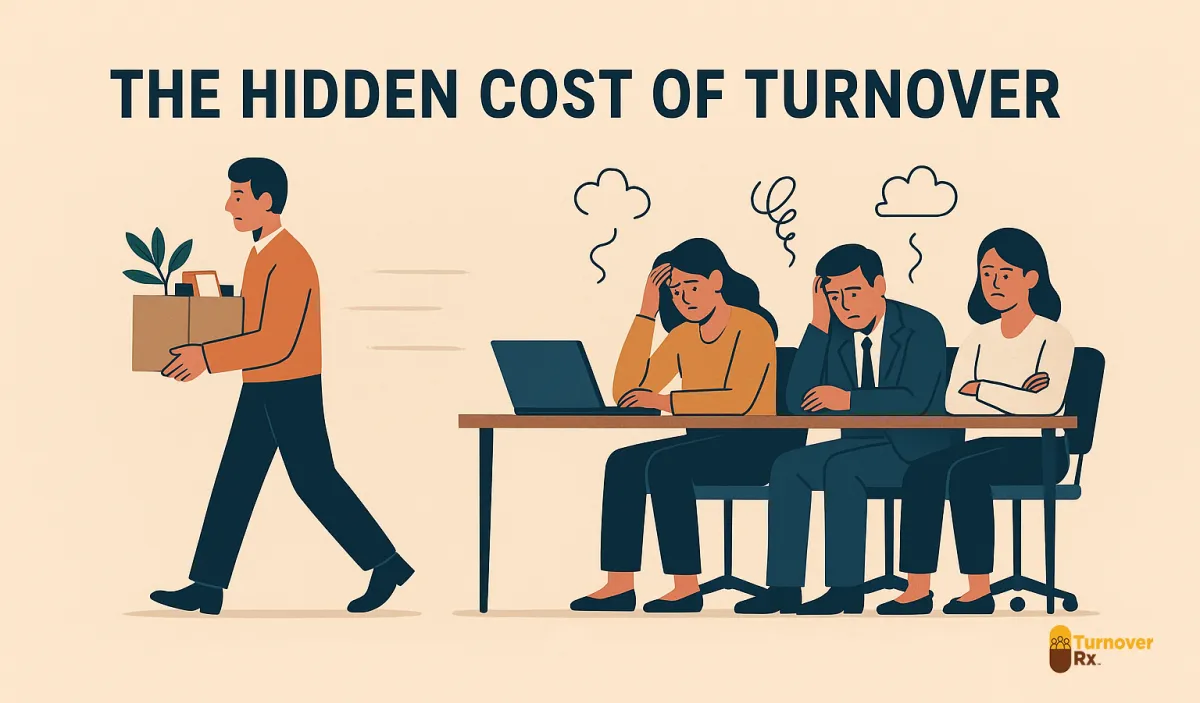
Cost of Employee Turover
The Hidden Cost of Turnover:
When One Exit Becomes a Mass Exodus

Most organizations track turnover through a cold, clean number on a dashboard—5%, 12%, maybe 18%. But behind every percentage point is a story: a farewell email, a restructured team, a rushed job posting, a disengaged employee quietly looking for their next move.
Turnover isn’t just about backfilling a seat. It’s a silent drain on morale, productivity, and culture. And if left unchecked, one person’s exit can set off a chain reaction that quietly devastates your workforce—and your bottom line.
The Surface Cost: Obvious, but Just the Beginning
When someone leaves, the direct costs are easy to identify:
Recruitment and advertising
Interview time
Onboarding and training
Lost productivity during the transition
Overtime or temp staffing to cover the gap
According to studies, the average cost to replace an employee is one-half to two times their annual salary. But even these well-known expenses are just scratching the surface.
The Hidden Cost: Culture Contagion
Turnover is contagious.
When someone leaves, remaining team members absorb the impact. They pick up the extra work. They question whether their own role is secure. They watch how leadership responds. The departure signals something—about workload, leadership, values, or opportunity—that others internalize, whether consciously or not.
And then, the real damage begins:
Morale Drops: People begin wondering, “Should I go too?”
Disengagement Rises: “Why give 100% if I might be next?”
Trust Erodes: If exits are handled poorly or repeated frequently, faith in leadership wanes.
Teamwork Suffers: Turnover disrupts bonds. When trust is low and roles shift constantly, collaboration weakens.
What starts as one exit can trigger uncertainty and instability. That uncertainty spreads like smoke, making it hard to breathe and easy to run.
The Compound Effect: When Retention Fails Become a Culture Crisis
Left unaddressed, this morale erosion leads to more departures. And with every loss, the remaining team becomes more stressed, more skeptical, and more likely to follow. Eventually, the organization hits a tipping point where turnover becomes systemic, not situational.
That’s when the real costs hit:
Project delays and quality issues
Customer dissatisfaction from inconsistent service
Brand reputation decline as word spreads internally and externally
Skyrocketing recruitment costs with diminishing return
Burnout among the “loyal few” who feel trapped but can’t leave—yet
At this stage, even good hires struggle to stay because they inherit a brittle culture.
Breaking the Cycle: Invest in Retention Before It's Too Late
The cure for costly turnover isn’t just a better recruiter—it’s better management.
Companies must look upstream and diagnose why people are leaving in the first place:
Are managers trained to lead, coach, and retain?
Are employees getting meaningful feedback and growth?
Is the culture supportive, inclusive, and purpose-driven?
Are workloads sustainable and boundaries respected?
Retention isn’t just an HR metric—it’s a leadership strategy. The most successful companies don’t just focus on who they’re hiring next. They double down on keeping the people they already have.
Final Thought: Don’t Let Silence Become Expensive
The most dangerous thing about turnover is how quietly it compounds. By the time leaders notice the symptoms—missed deadlines, low energy, disengaged teams—the damage has already begun.
Turnover is not just a cost. It’s a signal. And smart companies are listening.
